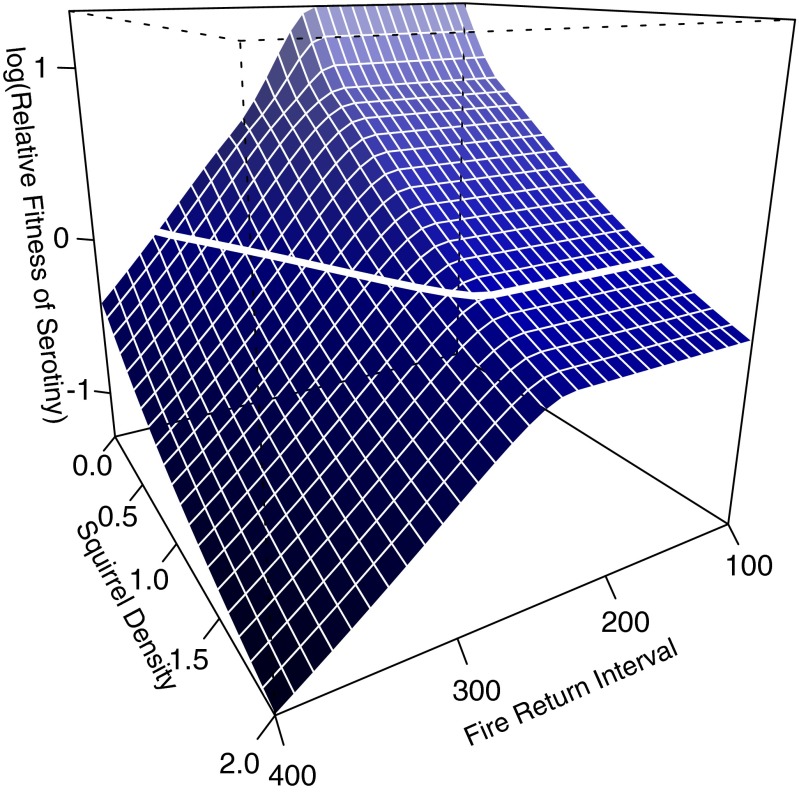Fig. 2.
Simulation results showing how the relative fitness of the serotinous genotype varied with fire return interval (years) and squirrel density (individuals per hectare). Serotiny was favored (above the white line; log relative fitness, >0) with short fire return intervals and low squirrel densities, whereas nonserotinous individuals were increasingly favored even at high fire frequencies as squirrel density increased.

